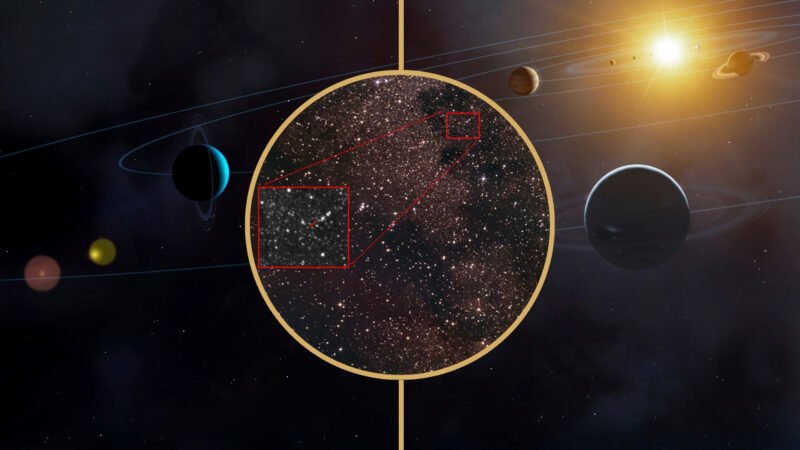Summary Points
-
Rare Discovery: Astronomers confirmed 3I/ATLAS as the third known interstellar object, following 1I/’Oumuamua and 2I/Borisov, highlighting its interstellar nature due to a hyperbolic orbit.
-
Impressive Size: At approximately 15 kilometers in diameter, 3I/ATLAS is the largest and brightest interstellar object detected, offering unique opportunities to study the formation of star systems.
-
Comet Classification: Initially detected with comet-like characteristics, 3I/ATLAS has been designated as a comet (C/2025 N1), indicating it has a coma and tail, similar to 2I/Borisov.
- Future Prospects: With advancements in telescope technology, such as the new Vera C. Rubin Observatory, astronomers expect to discover many more interstellar objects, suggesting that 3I/ATLAS may not be the last of its kind.
New Interstellar Object 3I/ATLAS: A Bright Spot in Cosmic Exploration
Astronomers recently confirmed a remarkable discovery: the interstellar object 3I/ATLAS. This marks only the third time scientists have identified a visitor from another star system. Experts first spotted 3I/ATLAS on July 1, 2025, using the Deep Random Survey remote telescope in Chile.
Initially, astronomers named it A11pl3Z, but its unusual movement quickly garnered attention. After extensive analysis, researchers concluded that 3I/ATLAS is not bound to the sun’s gravity. Its highly hyperbolic orbit features an eccentricity of 6.2, indicating it comes from deep space. This finding supports the idea that interstellar objects could be more common than previously thought.
One exciting aspect of 3I/ATLAS is its size. At approximately 15 kilometers in diameter, it significantly surpasses its predecessors, 1I/’Oumuamua and 2I/Borisov, making it a prime target for future studies. Like these earlier visitors, 3I/ATLAS has a comet-like appearance, confirmed by the discovery of a coma and tail.
Currently, 3I/ATLAS is safely within Jupiter’s orbit, far from Earth at about 323 million miles away. It will make its nearest approach to Earth on December 19, coming within 167 million miles. Notably, it poses no threat to our planet.
Astronomers have noted that 3I/ATLAS is currently dim, requiring specialized telescopes to observe. However, as it nears perihelion on October 29, experts expect it to brighten, becoming more visible to amateur astronomers.
This discovery opens doors to new scientific opportunities. The object carries materials that may offer insights into the formation of other star systems. Researchers believe analyzing 3I/ATLAS could enhance our understanding of the universe and potentially even life beyond Earth.
Increased detective work in the field of astronomy, particularly with advanced telescopes like the new Vera C. Rubin Observatory, helps explain the surge in interstellar object discoveries. These advances in technology promise a brighter future for cosmic exploration.
While 3I/ATLAS shines in the night sky, it underscores humanity’s growing capability to study the cosmos. As we gear up for the next wave of discoveries, interstellar visitors may soon become a more frequent topic of study and discussion.
Discover More Technology Insights
Explore the future of technology with our detailed insights on Artificial Intelligence.
Stay inspired by the vast knowledge available on Wikipedia.
SciV1

